My American History Tour: Shiloh, Guilford, Yorktown, and Philadelphia
George Washington forever.
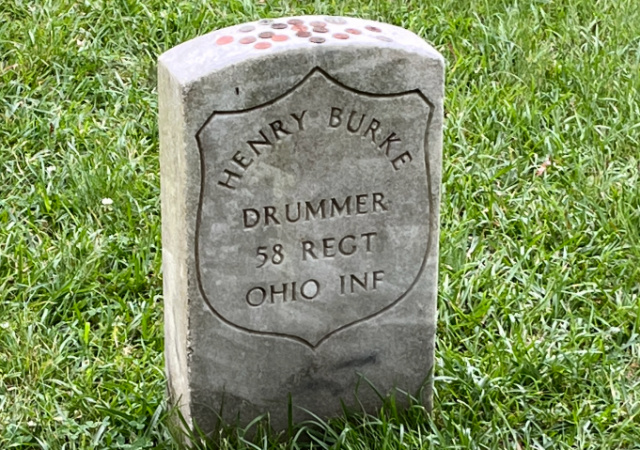
America is the best. There is nothing like taking a history road trip to visit battlefields and areas of significance while honoring those who fought and lost their lives for freedom.
I’m finally in Boston! I drove through Arkansas, Tennessee, Mississippi, North Carolina, Virginia, DC, Maryland, New Jersey, New York, Delaware, Connecticut, and Massachusetts.
Crappy free hotel Wi-Fi and non-stop driving hindered my writing ability. But in Boston, I will write daily posts.
Shiloh National Military Park
It all started with a monster storm driving through Oklahoma and Arkansas.
The storm made me pull off the road, pelting my car and courage with its rain and hail. Lightning crashed all around me. It tempted me to turn around and abandon the 2022 History Road Trip.
I refused to leave. It took almost 10 hours to arrive at Shiloh, TN.
Breathtaking. Humbling. Somber.
You need to make Shiloh National Military Park your #1 destination on any road trip centered around history or a side trip if you go through the area.
The Battle of Shiloh took place April 6-7, 1862. It resulted in a Union victory. Confederate General Albert Sidney Johnston perished in the fighting, giving the command to P.G.T. Beauregard.
It was the bloodiest battle of the Civil War up to that point. The Union won but suffered too many casualties. Plus the media battered Grant since the Confederates were able to surprise attack him.
Technical points:
- PRISTINE.
- The park marked everything, even if a regiment stood at the spot for a short time.
- The driving tour had spectacular signs guiding you to the next spots.
- Did I mention it’s pristine? Spotless, green and lush grass, and perfect roads.
I recommend taking two days to take in this entire battlefield. You need more than a day. The driving self-tour has 22 stops. All stops have a pull-over spot or parking lots so you can get out to explore. I didn’t have enough time to give proper attention to all of the spots.
The national cemetery next to the visitor center has those who perished at Shiloh. Each soldier is buried with his regiment. So many unidentified soldiers. I found some comfort knowing the men received a proper burial.
But this headstone greets you as you step inside.
Henry Burke, the drummer for the 58th regiment in the Ohio infantry. Civil War drummer boys were about 13-17 years old. They could have been as young as 10.
It’s taken me a while to find more information on Henry. I looked up the 58th Regiment Ohio Infantry roster and could not find him. I’ve spent these past few nights combing through records to try to bring Henry’s story to light.
I could not find anything concrete about the boy.
The Shiloh Cemetery includes the original Shiloh church. A small log cabin with only two doors once served this small community.
The battlefield of Duncan’s Farm took my breath away. So open, quiet, and eerie. The spot is set up like the battle with a fence marking the Union line, which had about 6,200 soldiers. The opposite side has cannons for the Confederate line, which had about 3,500 soldiers.
It is the bloodiest and heaviest part of the Shiloh Battle.
The road next to the field is called Sunken Road. The Union called the area the “Hornet’s Nest.”
The Confederates took the field. Beauregard got too cocky, though.
Grant received reinforcements overnight, which allowed him to outnumber Beauregard 54,000 to 30,000. The USS Tyler and USS Lexington helped the Union fight off of the Tennessee River.
The Union won, but lost 13,047 soldiers. The Confederates lost 10,669. The media blasted Grant for allowing the Confederates to surprise attack him. Lincoln refused to fire Grant.
The park service marked every spot a regiment stood during the battle. I cannot put into words the brilliance of this park.
Guilford Courthouse
Disappointing!
You would think the battle that spelled the beginning of the end for the Redcoats would have a proper park like Shiloh!
General Charles Cornwallis defeated Major General Nathanael Greene but he lost a ton of soldiers. Greene managed to retreat with his army mostly intact, which leads us to Yorktown.
Greene went to dismantle the Redcoats in the south. Cornwallis went to Yorktown, which turned out to be his Waterloo.
Instead, we have a park that is more of a park for joggers, hikers, cyclists, and dogs. They did not give us great signs, making it hard to navigate. The roads are skinny so you’re constantly at war (no pun intended) with those on their feet.
They didn’t even recreate the Guilford Courthouse! Here’s a sign saying that the Courthouse likely stood at the spot.
Thinking about this national park makes my blood boil. I’m so ticked. The importance to history should make it a must stop but my goodness. No.
Yorktown
So Cornwallis went to Yorktown after he won Guilford Courthouse.
Big mistake. Cornwallis should have gone more inland because the French Navy helped take out the Redcoats in the Chesapeake Bay. Cornwallis didn’t get supplies or reinforcements.
The Continental Army with the help of the French, including badass Marquis de Lafayette, defeated him after marching from Williamsburg at the end of September.
We had 17,800 troops. The Redcoats had 8,300.
Cornwallis got a few more soldiers but the Continental Army and French bombarded the Redcopats nonstop for two days, taking out the big guns.
Then Cornwallis heard that General Clinton could not leave New York in time for him to hold off the Freedom Fighters.
Cornwallis’s defeat led to the Redcoats negotiating an end to the war. It was the last major battle in our war for independence.
BOOYAH.
How do you NOT get emotional standing at Surrender Field on the road where the defeated Redcoats marched surrounded by the Army and French?
On October 17, 1781, a drummer boy and a Redcoat waving a white flag emerged.
Washington accepted the surrender terms. The official surrender happened at 2 PM that afternoon. Cornwallis didn’t even show up. The baby had a stomachache or something.
General Charles O’Hara gave Cornwallis’s sword to the Continental Army. Cornwallis was sick or something. What a baby. Suck it up!!
Defeat is hard to swallow I guess, especially at the hand of a bunch of farmers.
The French and Americans stood on the side of the road outside of Surrender Field as the Redcoats took their Walk of Shame. Oh how I wish I could have been there!
MY HEART. You could literally smell the freedom.
The signs and roads at Yorktown are so much better than Guilford.
But always do the driving self-tours. You can take your time and soak up the liberty in front of you. NOTHING beats walking on the same ground as the Freedom Fighters.
Yes, Yorktown is also a Civil War battlefield but the park and tours center around the Revolutionary War battle.
Walking where our ancestors fought for our freedom. Walking where General George Washington had his headquarters.
Honoring those French soldiers who lost their lives so we could be free from tyranny. Yes, I know it was because they didn’t like the British but still!
Philadelphia
Since we had to drive through Philadelphia I decided to make a pitstop. How do you not go to Independence Square? Well, I never saw online that I could only buy tour tickets ONLINE. But we saw the Liberty Bell and Congress Hall.
Princeton
Well, we planned on seeing the Princeton park on Sunday morning, but….it poured all morning long.
We had to skip Princeton.
Anyway, now I’m in Boston. We plan on going to Salem on Monday!
 DONATE
DONATE
Donations tax deductible
to the full extent allowed by law.

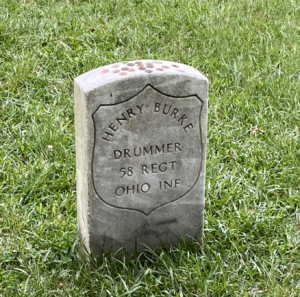
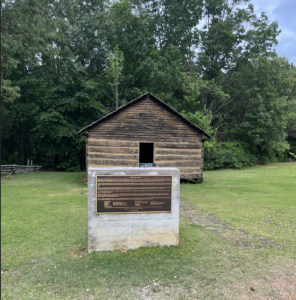

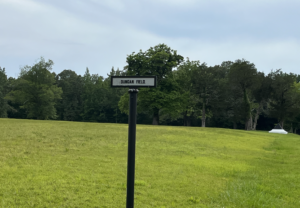

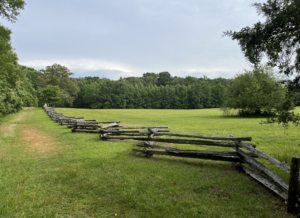
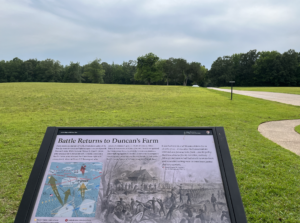
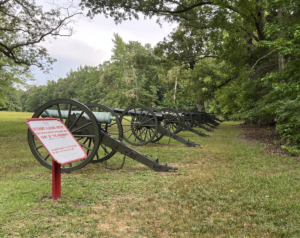
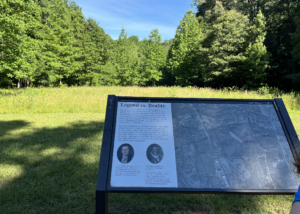
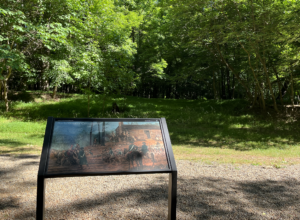

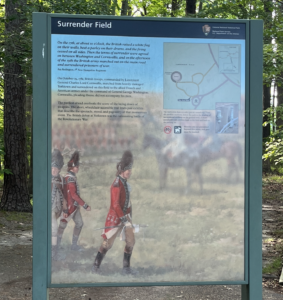
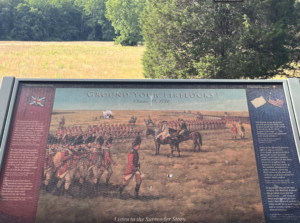

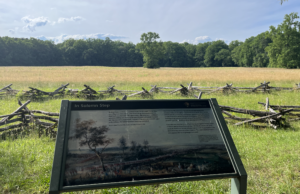

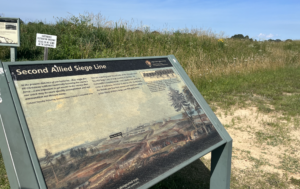
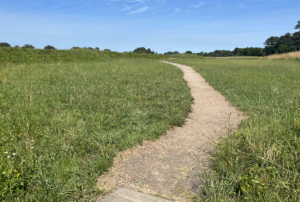


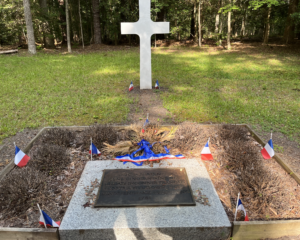
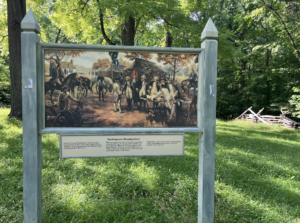
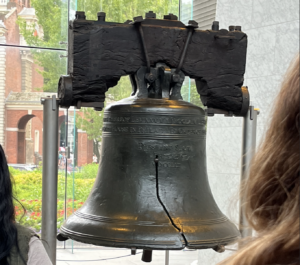
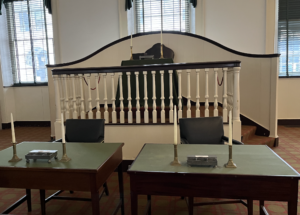








Comments
Mary, if you were driving through OK and AR on Sunday the 5th that was the worst rain I have ever experienced. I thought the eastern half of OK was bad until it started up again in western AR. I’m glad you were able to enjoy your history-tour (and I’m glad I survived that hellacious rain).
I drove on Wednesday, June 8. I’ve never been so scared in my life.
If you have any interest in US History then Shiloh is absolutely a must. I’ve gone twice once in Boy Scouts and once as an adult. You won’t regret it but if you can’t deal with high heat/humidity then try the Spring or Fall.
Grant’s superiors tried to bully him into resigning after Shiloh, and even threatened insubordination charges after he went on to take Nashville without checking in with them first. They were politicians-in-uniform who were miffed because Grant’s progress, messy though it may have been, was making them look bad.
There were charges before and after Shiloh that Grant was a drunk and or drunk during the battle-Lincoln responded by saying that if all of his generals fought as well as Grant, he would send them each a case of whiskey. Lincoln was proven right as Grant was the victor at Shiloh, besieged Vicksburg and broke the siege of Chattanooga. The Northern press, which hated Lincoln and often called for a negotiated settlement with the South, viewed Grant as a butcher during the 1864 Wilderness to Petersburg campaign where Grant despite taking heavy casualties, did not retreat , kept his focus on reducing the capacity of Lee to fight, and besieged Lee’s army which led to Lee’s ultimate surrender in such an amicable manner at Appomattox , Grant’s able lieutenants Sherman and Sheridan waged total war on the ability on the economy and the will of the South together with a strong naval blockade of southern ports, If the Civil War had been fought under what is called international law, we would still be a nation half slave and half free
You would also find Gettysburg to be fascinating. I toured the battlefield many years ago while living in Pennsylvania. It is a humbling experience.
I have good friends that live there.. We visit every year.. it is such a nice town. They have gone to great lengths to keep the battlefields and the surrounding country side in its original condition.
Took my college aged niece who wasn’t going back home to Cali over Thanksgiving some years ago.
Best. Time. To. Go. Ever.
Visit the battlefield on your own. See the various positions on both sides. Hardly anyone there on T Day so you can park and walk all over. Enjoy the buffet at General Picketts (make a reservation or starve).
Do not move the rocks around on the rock wall, it’s a big ticket. Some idiot runner put her keys among them and was busy tossing them aside when the park rangers came along.
Day after T Day go early to the headquarters and sign up for the bus tour. Visit the displays while waiting for the tour. Tip generously to the bus tour guide who will give you the best tour you’ve ever been on.
have been there a couple of times and you are right–it is a humbling place indeed
have ancestors that fought on both sides in that conflict–could feel the place walking around–and pickett’s charge–jeezus–nearly a quarter of a mile, under fire from artillery and mixed arms and they lost six thousand in the attack–lord, you can feel the valour still emanating from the ground
That long exposed gentle-uphill slope. A rare occasion when I could feel the ghosts around me.
Gettysburg is indeed a humbling experience. When you drive or walk around that battlefield, anything that you have read about that pivotal battle really comes to life.
I’m going to Gettysburg on the way back! Only have a day there, though. 🙁
I can’t imagine anyone standing on Cemetary Ridge and not pondering “what were they thinking?”
Some of my paternal ancestors fought at Guilford Court House. They were local militia and from reports then, they acquitted themselves pretty well.
The problem with the Guilford Courthouse battleground is the battle took place.. a bit nearby. They tried their best to get the correct piece of land, but the archeologist who have tried to draw up the locations of the fighting have discovered the bullets in the under nearby housing developments. What you see is just a memorial park (best used by college students during the warm weather). – Yes, I have been there several times.
Not only there but battle remnants have been found all the way to new garden Friends Meeting. Guerilla fighting spreads over many miles and days.
FWIW, for anyone doing a Civil War historical road trip along I-40, the “Sultana” Museum is located in Marion, Ar., just off I-40, east of Memphis. The Sultana steamship disaster is the greatest loss of life maritime disaster in US history; that very few people have heard of. 1,500-1,800 Union soldiers, many recently released POWs, died when the Mississippi river boat, Sultana, exploded.
“Marion, Ar, West of Memphis.
I’d recommend scheduling your Civil War battlefield visits to align with the date of the battle so that would be Shiloh in April, Gettysburg in July, Antietam in September. May as well see the sun and the season in the same way as the men who fought there.
Shiloh was a real awakening. As Bruce Catton wrote, “It had been possible, before, for a Northerner or a Southerner to believe that the other side was not very much in earnest…”. As it was, the war, “was being fought by men of enormous innate pugnacity: tenacious men who would quit a fight once begun only when someone was beaten.”
We visited Gettysburg twice in the summer-you are correct in that observation
The historian and author, Shelby Foote, offered the same advice to visit the battlefields the time of year they were fought while being interviewed for Ken Burns’ epic series — The Civil War.
Ty Mary.. love all the pics.. adds such a personal touch. I was in Philadelphia on Sunday.. all I saw was the airport. A long time ago someone told me that Shiloh was a Hebrew word meaning peace, something like that… It always seemed ironic that there was such a huge battle there.
You’re welcome! It is ironic that Shiloh means “peace,”
Philadelphia has an excellent Civil War museum. Later in the Civil War, the soldiers would pin their names on a piece of paper in their uniforms. By the time the battlefields were cleared, many of the bodies were bloated and black. One soldier wrote on his piece of paper with his name..”Today I die”. That was Cold Harbor where Grant lost 6000 KIA, WIA, and MIA in one day of battle. Looking back at those two wars, could we even make a similar stand today? We may have to.
Not this group
Two not-very-significant places some people don’t know about and/or skip, but they are interesting:
1.) Battle of Palmito Ranch – fought in the cactus scrub near Brownsville, Texas. It happened a month after the Appomattox surrender. This is very close to the Space X pad, maybe you’ll be lucky for a launch. Boca Chica beach nearby, South Padre.
2.) Battle of Picacho Pass north of Tucson – the Western-most battle of the war. Tall cactus here.
I have visited both during the month of August. If you have to pick one for that month, pick the one with the beach.
Dont’ you just hate what they’ve done to the Alamo area…..I liked living in San Antonio but hated downtown.
Your trip is awesome, by the way, have fun.
Thanks! I’m loving all of this!
Visited Shiloh 50 or so years ago. Stayed at a campground. Just out of college and decided to go around the country with a friend who was also just out of school.
The place is overwhelming when you consider this was American versus American and quickly they destroyed each other.
Hopefully we don’t ever go down that road again.
We are there. We can’t stand each other. We either kill each other, like in millions or split the Country
Thank you Mary. Spiritually uplifting and we needed it
You’re welcome!
This thread seems a good place to ask this question.
So a few years ago I tried watching the 2013 series Sleepy Hollow and loved it to pieces – secret history has always been a favourite genre of mine. As a Canadian, however, I had no idea what the hell Crane was talking about most of the time because my knowledge of American history mostly stems from Schoolhouse Rock vignettes broadcast across the border from WGRZ New York State when I was ten years old.
So I’m looking for a good popular history of the Revolutionary War, and I’d prefer it to come down more on the “AMERICA! F*** YEAH!” side than the “America: Founded in Slavery and White Supremacy” side. All I know of the is the Rush Revere books and those are for kids. Anyone have any recommendations? Ebooks are fine, I have a reader.
That’s a really big area, my library has more Colonial/Revolutionary War books than any other subject. I’ve got 20+ books on George Washington alone and there is still stuff coming out about him.
I would suggest three. Two are broad histories that cover the same time frame (beginnings of the war) but in different ways, I consider them companion books. If you read both, you will get a very solid foundation.
1776 by David McCullough
Washington’s Crossing by David Hackett Fischer
Then this, which covers the time before the war: Paul Revere’s Ride by David Hackett Fischer
All three are not just good history books, they are well-written for a general audience. You don’t always find that combo. And they don’t have the BS. They are not broad overviews of the entire war, they cover the basics about the beginnings, which I think what’s most important. It will help you branch out into other areas you want to explore. If you get into this, you have enough books to read for decades.
Founding Brothers: The Revolutionary Generation
Is another good general audience book that covers the post-ratification, nation-building period. The most somber chapter, if arguably the most interesting, is “The Silence”, exploring how the question of slavery was a moral and political can kicked down the road for the sake of keeping the country from falling apart in its infancy.
Thank, Colonel, that’s great. I’m good with a starter book(s) and I can branch out from there.
Please tell me that you went to Colonial Williamsburg and possibly Jamestown while you were here in Yorktown (the three are called the Colonial Triangle.
No not this time. I didn’t have enough time unfortunately. If I could spend all summer going to all the spots I would.
You should definitely do a return trip…each is only a day (or maybe a day combined) and there’s some good stuff in Maryland as well. DC is also close and by then it might have found some sense of sanity.
Thanks for sharing, Mary.
You’re welcome!
I visited Shiloh last fall during a solo trip that took me to Andersonville, Vicksburg, Chattanooga and Atlanta. Shiloh was by far the most moving snd beautifully cared for site of all. Most of that I attribute to its remote location. Amazing and I hope to visit again someday.
And just down the road from the entrance is a great restaurant with some of the best catfish you will find at the Catfish Hotel.
The Liberty Trail in Boston, Williamsburg, Yorktown , Philadelphia and Gettysburg together with visits to West Point and Annapolis are part of what I call my Freedom Tour. The Smithsonian has nice exhibits also but have a strong wiff of the woke to them A great unabashedly pro American museum is the Museum of Science and Industry in Chicago which has on display a U Boat captured during WW2.
Just curious-how far a drive is Shiloh from St Louis?
About 5.5 hours.
Read your travelog this morning, shame while in Philadelphia a trip to the Revolutionary War museum wasn’t in the plan.
“You would think the battle that spelled the beginning of the end for the Redcoats……”
I had ancestors at the Battle of Guilford Courthouse, but that statement is simply incorrect. The beginning of the end occurred at another battle known as King’s Mountain. Without it, there would not have been a Guilford Courthouse. In fact, without it, there may not have been a United States at all.
While America was desperate for a victory, and all appeared to be lost, the “Overmountain Men” traveled several hundred miles to trap the British on King’s Mountain where they utterly destroyed them. Then they immediately returned home to defeat the British Allies, the Cherokees, and protect their homes. The victory set the stage for Cornwallis’ retreat to Yorktown and the Battle of Guilford Courthouse.
And the reason you were disappointed is that federal designation and funding of Revolutionary War national parks overwhelmingly favors northern battles, while anything in the South is hardly acknowledged. King’s Mountain is a prime example.
But I love your article, almost as much as I love the history of our country.